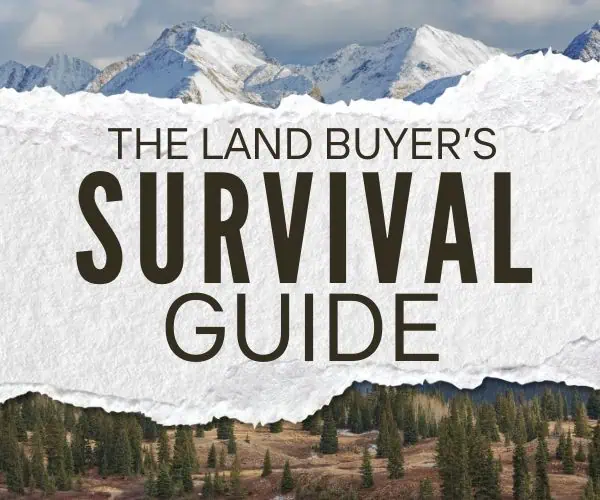
REtipster features products and services we find useful. If you buy something through the links below, we may receive a referral fee, which helps support our work. Learn more.
The first rental property I bought earned me about $250/month in cash flow. This is after all expenses, vacancies, and loan payments had been accounted for. It was actually a pretty good deal. Still, I quickly figured out that owning two or three of these properties would NOT be enough to retire on.
I did some rough estimates and concluded that it would take about 40–50 rental properties to generate what I considered “meaningful passive income.” This would be somewhere in the $150–$200k a year range.
As you can probably imagine, I was a bit depressed by those numbers. It took me six months and A LOT of effort just to buy one single property, so how in the world was I going to get 49 more?
The Challenges of Buying Rental Properties
Early on in my real estate investing career, one of my mentors explained to me that two primary factors were limiting the growth of my real estate portfolio:
- The cash I had available to fund more deals.
- My ability to get additional financing.
This realization clicked with me at the time. So, I spent the next four years doing my best to overcome both challenges.
I think I was pretty successful. My wife and I now own a portfolio of 35 rental units spread out across California, Georgia, Alabama, and Missouri.
To get there, I didn’t use creative financing, had no partners or syndicates (besides my wife), and didn’t do any of those “no-money-down” deals. All I did was focus on maximizing the cash I had available to invest. I also looked for additional sources of financing beyond conventional mortgages.
As a disclaimer, I have nothing against creating more creative real estate deals. I just want to share some tips that helped me grow my portfolio without them. I think they can be used by anybody to buy ten (or more) rental properties in five years.
How Much Cash Do You Need to Buy Rental Properties?
Most conventional financing arrangements will require putting down at least some of your own cash into each real estate transaction. So the cash you have available to invest will limit how many rental properties you can buy, and how often.
This is what I did to maximize the cash I had available.
I focused on growing my primary income.
I’m not into flipping houses or wholesaling deals (nothing against this, just not my thing). Instead, I focused on maximizing my income from my full-time job and various business endeavors. I channeled any additional income directly into buying more real estate.
I lived a frugal lifestyle.
I’m not into flashy homes, cars, exotic vacations, or other expensive habits. Don’t get me wrong; I like to indulge every time. But I’ve maintained a consistent savings rate of over 70% throughout the years. Combined with maximizing my income, this resulted in significant savings.
I re-invested 100% of my rental income.
Since buying my first investment property, I have not touched $1 of the rental income it generates. I saved it all, combined it with my personal savings, and used it to fund more property purchases.
I focused on buying cheaper properties.
As I grew my portfolio, I focused on buying properties in the $65k–$85k per unit range. This was impossible in my local market (San Diego, whose median price of properties was upwards of $600k), so I started investing in the Midwest instead.
At first, my personal savings were the biggest contributor to how quickly I could save for the next property purchase. Over time, however, the passive income from my rental portfolio caught up and eventually became responsible for the bulk of the growth.
RELATED: The Surprisingly Simple Math to Retiring On Real Estate
As a bonus, once I owned a few properties for several years and their prices had appreciated, I started re-financing them to withdraw the additional equity I now have. Any equity in my existing properties is basically “dead money” that I can’t use to buy more properties, so I do not need for it at this point.
Rental Property Financing 101
The second limiting factor in growing your real estate portfolio will always be financing. It’s simple—if you can’t get a loan, you can’t buy the property. You can buy it with cash, but it will slow down your wealth generation.
New investors naturally rely on conventional, 30-year loans to buy rental properties. These are perfectly fine since government-backed mortgages often have the best rates and the longest terms/amortization periods of anything you’ll find elsewhere.
The problem is that due to their rather strict debt-to-income requirements and other regulations, you will, in many cases, max out at around 10 loans. I’ve heard people disagree on the actual number, but I think around 10 is a good guess. After that, most banks will simply refuse to give you a new mortgage.
How to Get Continuous Real Estate Financing
One thing that helped my wife and me is to buy our rental properties separately, under our personal names, instead of under a joint title.
As far as I'm aware, this is possible in most states (or at least where we invest in). What this did was double our conventional mortgage limit, compared to buying everything as a couple or alone. We can still max out, but not until much later. When we feel we're approaching this point, it will be time to look for alternative solutions.
These two options are the easiest to find, in my opinion:
- Commercial loans. Although we started with buying single-family homes, we ultimately transitioned to buying residential multi-family buildings (2-4 units) and are now looking into larger 15-20+ unit complexes. Because of that, we switched to commercial financing. Hundreds of banks offer it across the country with different rates, terms, and requirements. I was even able to find a lender who finances 2-4 units with a 25-year amortization period—all you have to do is look and ask around.
- Portfolio loans. Similar to conventional loans, portfolio loans are much more flexible than conventional mortgages and the terms will depend on the lender. You can often use these to finance single-family homes or entire “packages” of properties. You’ll have to do some online searching or networking with other investors to find these. Still, once you establish a relationship with a portfolio lender, it will open up almost unlimited financing options.
There are definitely other financing options out there, like seller financing or private money. I don’t have experience with them, so I can’t comment on their effectiveness, but your overall strategy will usually remain the same: Stick with conventional mortgages as long as possible, then start looking for alternative financing options.
Is This Really Possible?
Is buying 10+ rentals in 5 years possible? I think so. It does require work and maybe even some sacrifices to live a more frugal lifestyle, but it’s achievable if you put your mind to it. For example, you can buy a single rental property in the first year, another in the second, then two, three, and finally three more in the last year.
RELATED: Rich Carey Owns 20 Rental Properties DEBT-FREE. Here's How He Did It…
How fast you can grow your portfolio will hinge on two things. First, on your ability to maximize your available cash while minimizing the cash needed for each deal. And second, on securing additional sources of financing.













